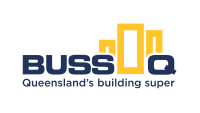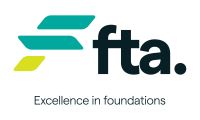Manual tasks
Menu
- Membership
-
Services & advice
- Building, planning & development
- Contracts & disputes
- Employment & wages
-
Health, safety & environment
-
Common hazards
- 10 critical risk events and controls
- Asbestos
- Bullying & harassment
- Chemicals
- Confined spaces
- Electricity
- Excavation
- Falling objects
- Fatigue
- Heat-induced illness
- Heights
- Manual tasks
- Mobile plant
- Noise
- Psychosocial Hazards at Work
- Power tools
- Severe weather
- Silica
- Site security
- Sun & ultraviolet rays
- Storage & housekeeping
- Underground & overhead services
- Health & Safety Representatives (HSRs)
- Incident management
- Mental Health
- Risk management
- Safety documents & signage
- Safety health checks
- WHS self assessment tool
- COVID-19
-
Common hazards
- Laws, codes & regulations
- Licensing
- Members Legal
- Products
- Training
- What's on
- News & publications
- Homeowners
- About
- Contact
- Terms & conditions
Construction work involves performing manual tasks, no matter what trade you work in.
Manual tasks require you to move, hold, lift, lower, push, pull or carry objects, such as plant and equipment or materials, which can stress your body and lead to injury or musculoskeletal disorders.
Manual tasks can be hazardous when you’re exerting or subjected to:
- Repetitive or sustained force, for example carrying a bag of concrete over a long distance
- High or sudden force, for example impact recoils from a nail gun
- Repetitive movement, for example hammering nails by hand or painting a structure
- Sustained or awkward posture, for example holding plasterboard sheets up to the ceiling or bending over to install fascia because a work platform is too high
- Vibration, for example jackhammering concrete or breaking rock.
Planning and risk assessment
It’s important to identify hazardous tasks and implement suitable control measures to eliminate or reduce the risk of injury. You should try to eliminate or reduce hazardous manual tasks early on at the building design stage.
The key to preventing musculoskeletal disorders and managing the impact of manual tasks is to take action at the planning and design stage of the project. You should consider the following before commencing work:
- Can heavy materials be delivered in smaller, more manageable sizes?
- How many people will be needed to safety perform the task?
- Is there an alternative method or machine that can be used to lift, move or install the material, or perform the work?
You should consult with suppliers, designers and subcontractors before work begins to have the best chance of eliminating the risks.
Control measures
Hierarchy of Controls
Use the following Hierarchy of Controls to determine what level of control you need to manage the risks associated with manual tasks:
- Elimination – Does the task need to be done? Can the materials be lifted by crane instead?
- Substitution – substitute heavy items with lighter, easier to handle items. Replace hand tools with power tools to reduce the level of force needed
- Engineering controls – use a sheet lifter to install plasterboard sheets
- Administrative controls – rotate workers between tasks and invest in training, programs and tools such as ManTRA and PErforM
- Personal protective equipment – wear anti-vibration gloves and ankle-support safety boots.
Lifting techniques
Training in correct lifting techniques is frequently noted in Safe Work Method Statements as the main control measure for manual handling risks. However, training doesn’t minimise the risk of injury – as workers are still exposed to the same risk. Therefore, it’s important to work with subcontractors to identify and implement controls that focus on eliminating parts of the job that present the hazard. Consider the design of the structure or project and the material type when identifying ways to reduce the risk of hazardous lifting tasks.
Need more information?
If you haven’t found the answer to your questions on our website, give us a call or email us.





